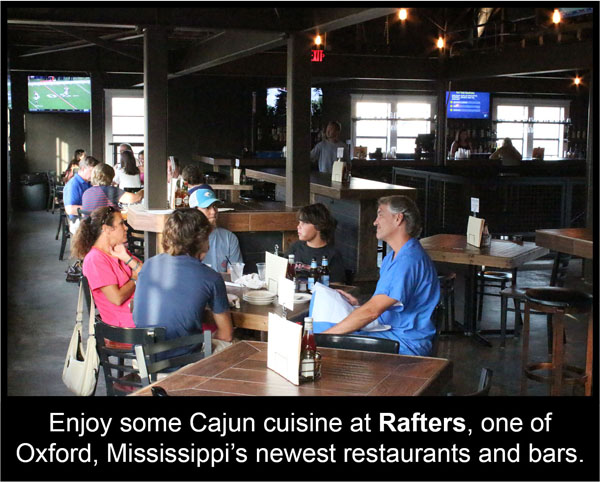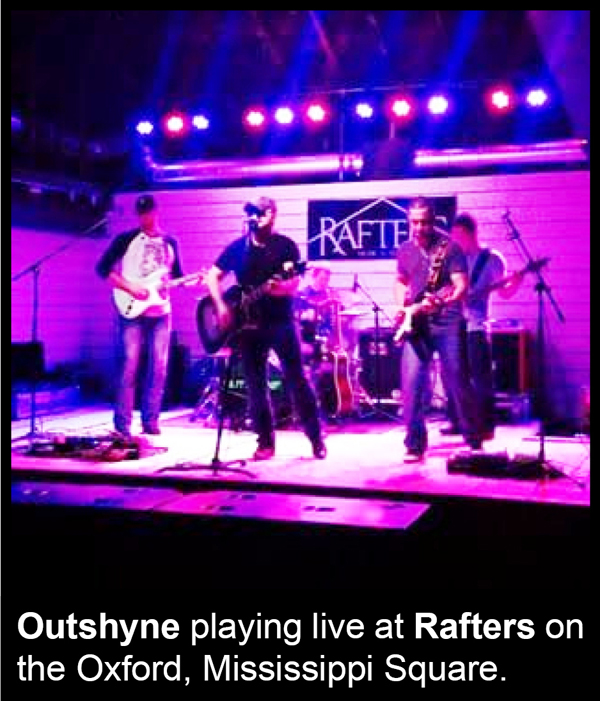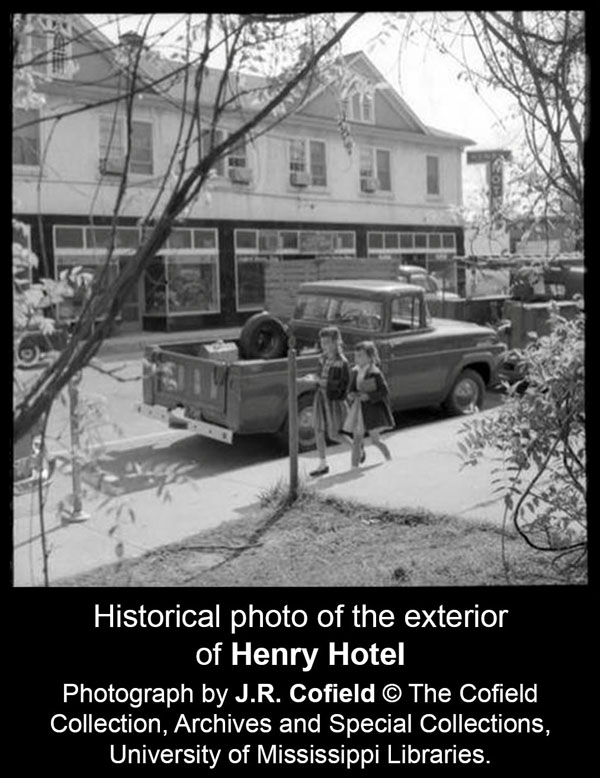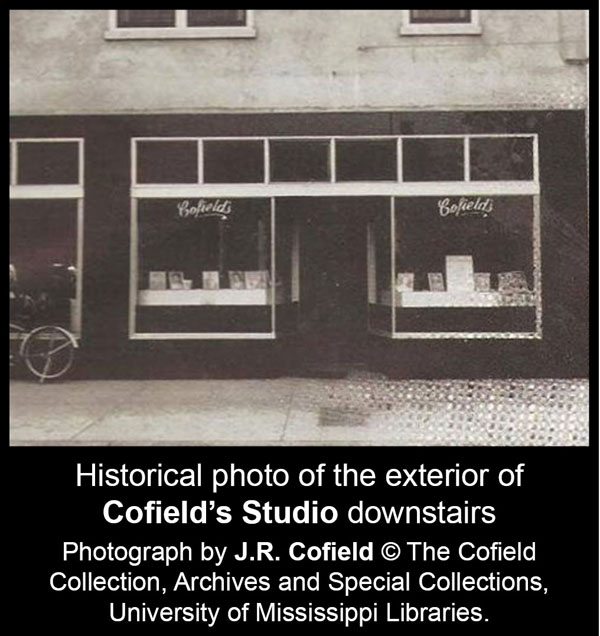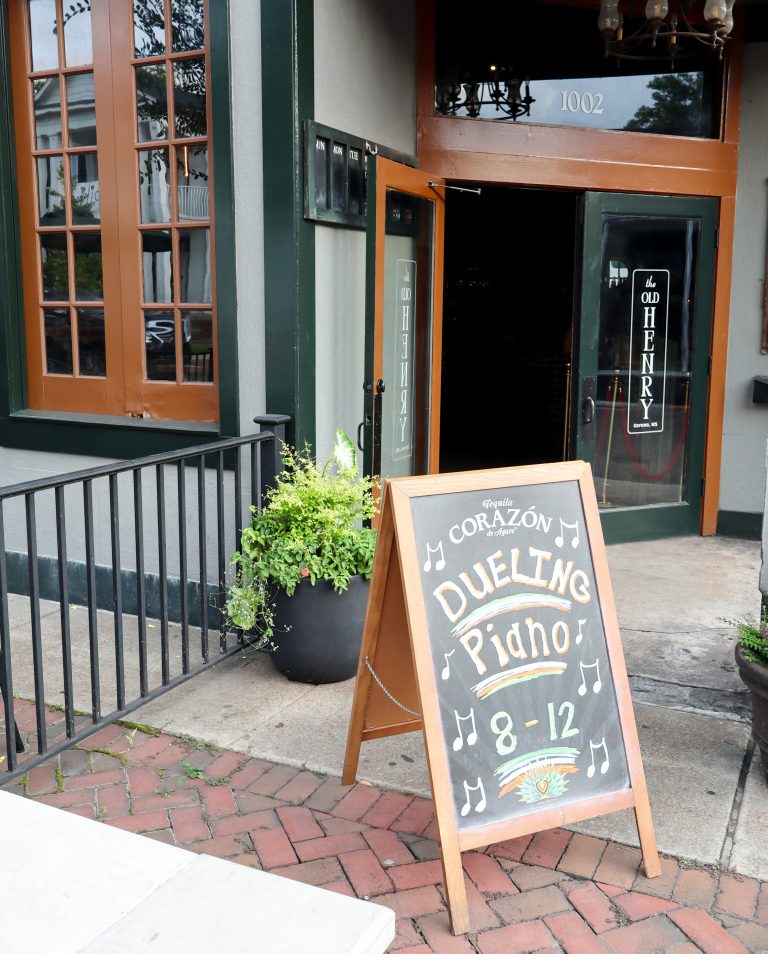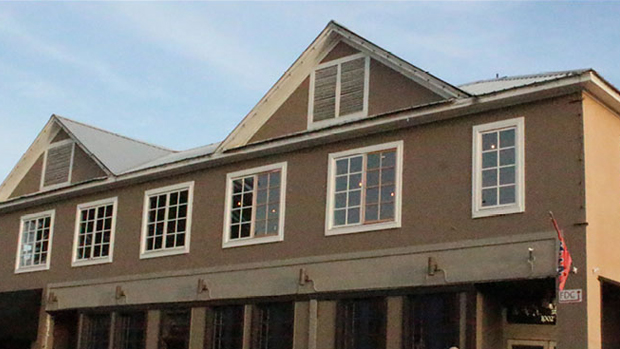
GEDSC DIGITAL CAMERA
Oxford loves its history. It’s also enjoying a high level of expansion and growth. Occasionally, in a town so compact, something has to give.
Rafters, one of the newer bar/restaurants on the Square, is managing to start something new while preserving some of the history that makes its location unique.
Located directly above The Corner Bar (with which it shares an owner in Hudson Chadwick), Rafters is something of an alternative to the cluster of bars directly beneath it. Offering live music, a New Orleans-inspired menu, and an architectural focus on the open air, it is already enjoying a good deal of business with all signs pointing up with the approach of football season. Upon walking inside, you’d hardly recognize it as the same building that recently housed apartments and offices – let alone one of Oxford’s oldest and most historic hotels.
According to Chadwick, however, preserving the history was a major part of the renovation process.
“It’s a really cool place upstairs. I knew I wanted to do something with it,” said Chadwick. “We climbed up in the attic and saw the original wood of the roof structure. [We] kinda knew we wanted to open it up.”
Back before the Henry Hotel opened its doors in the 1920s, the site housed a Methodist church. The church burned, however, and relocated right around the corner to its current location.
Chadwick explains that the Henry’s original construction methods made the renovation process particularly difficult: “Everything except that roof structure is built from concrete. They had to build everything by hand in the ‘20s. It was a feat of engineering, really. Concrete and brick.”
Each of the hotel’s thirty rooms had concrete walls – even the walls to the individual bathrooms were concrete. “The biggest challenge that we had was, how do you get 180 tons of concrete off of a second story building without destroying it? It’s not like you can bring in heavy equipment to do it.”
“It was literally just people with sledgehammers, beating down concrete walls, and then haul[ing] it off,” Chadwick says. “Straight manual labor, done the old-fashioned way.”
All that hard work eventually paid off, however, and this evidence of the building’s past life has lent the space a unique flair.
“We added the steel work, but as far as all that wood goes, that’s all original… [O]nce we took down all the interior walls, took down the ceiling, and exposed the wood, we really had a new shell of a building to work with.”
This only accounts for one floor of the building, however. The downstairs portion of the building has a good bit of history to it, as well.
“The Corner was originally photography studio,” says Chadwick. “That was Cofield’s. That was where William Faulkner used to get his pictures taken. Basically the setup was: hotel on the second floor, retail on the first floor. There were three individual storefronts (that now make up The Corner) downstairs.”
Eventually, both the Henry and the adjacent businesses were closed and replaced with bars and, for a short while, apartments.
However, The Local Voice publisher, Newt Rayburn, remembers the building from yet another chapter in its history, as the office of
The Oxford American.
The Oxford American was founded in 1992 and bought by John Grisham in 1995. Rayburn worked there as Art Director from 1995-1999. It won a National Magazine Award in 1999, solidifying its reputation on a national level. Today, it is known for (among other things) its annual Southern Music Issue, Rayburn’s brainchild.
“After [Grisham] bought it, it became more of a national thing. He put a lot of money into it, and we worked night and day on that thing for years.”
Rayburn explains that the building had, at that point, retained its hotel look.
“The staircase went up into this little courtyard, and there was a fountain up there. If you went left, you’d go where their stage is now, and that was the front of our office, our reception area.”
The magazine’s different departments each had their own room, with the same dimensions as the original hotel layout. “[The hall] had little rooms all along; here’s the art director’s room, here’s the editor’s room, it was really weird,” Rayburn remembers. “But it worked for what we were doing. We were a quirky little magazine trying to make it in the world.”
The magazine has since moved to Little Rock, Arkansas, but for Rayburn, the memories of the magazine’s early days still linger in that space.
“For me, if I go to this part of Rafters, I’m thinking, ‘this is where my desk used to be.’ It’s kind of cool. I’m glad that it’s in use.”
Chadwick certainly has a few more uses in mind for Rafters than merely opening another bar to expand The Corner’s footprint.
“The original plan when we did it was just to expand The Corner,” he says. “Once we started getting into the process and looking at the different things we wanted to do… [w]e started talking about maybe differentiating it.”
“What sealed the decision for me was my cousin, Walker Dickens. He called me, and wanted to be a part of it. He’s been in the restaurant business down in Louisiana, and we really put the reins of the food side of things in his hands. We had a totally different food concept [from The Corner].”
Chadwick also detailed his plans to liven up the space with live music as opposed to the DJs many bars choose to host. “Most Thursday nights, we do country,” he says. “Lots of up-and-coming artists are on the books. Fridays and Saturdays, we try to generally have a fun party band… [W]e really focus on finding bands that know how to throw a party.”
Chadwick states that his end goal is to have music on the upstairs stage every night of the week. “If we can get the town to support it,” he says, “then once the fall semester rolls around, we’ll do it.”
It should be an easy sell for a town that likes to remember the “good old days” almost as much as it likes good times in the present. ![]()

